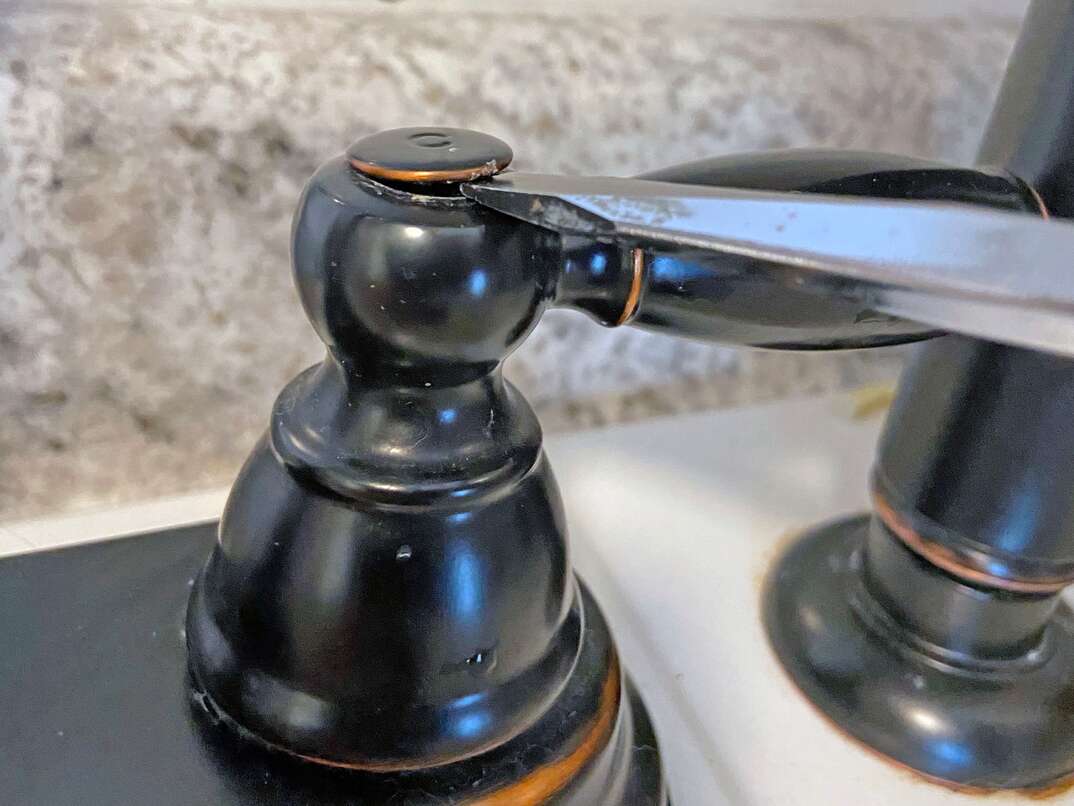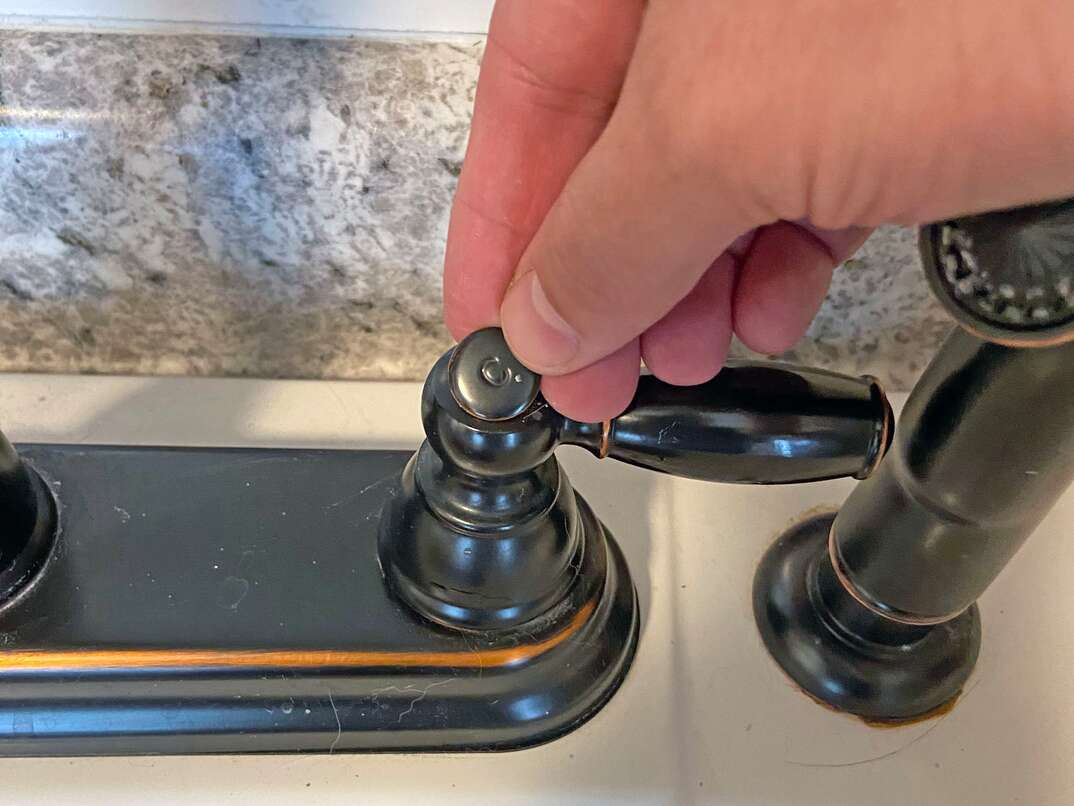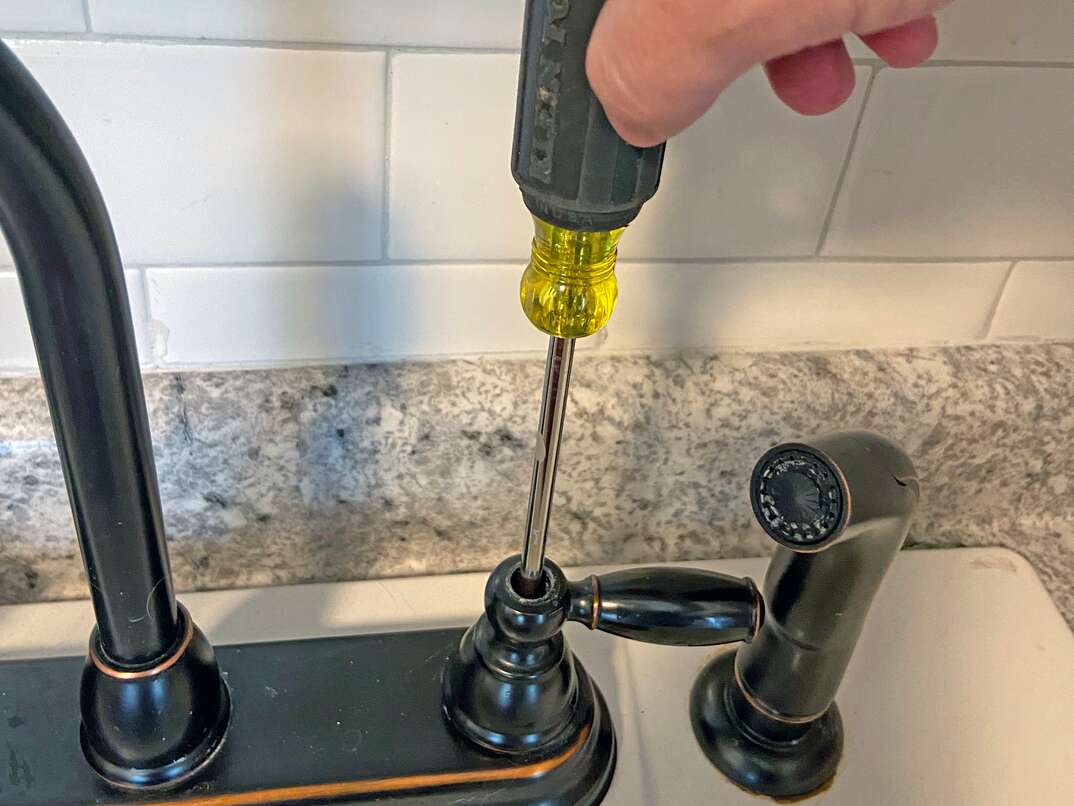How To Tighten Bathroom Sink Faucet
Tightening a Faucet Handle at a Glance
- Tools & Materials: Allen wrench, screwdriver, wrench, flashlight, plumber's tape, thread sealant
- Tightening a Set Screw:
- Step 1: Remove covers
- Step 2: Tighten screw
- Optional: Add thread sealant
- Tightening a Retainer Nut
- Step 1: Clear space under sink
- Step 2: Locate retaining nut
- Step 3: Tighten nut
- Optional: Wrap with plumber's tape
A loose faucet handle is no doubt annoying. But did you know that a loose faucet handle can also damage your sink's plumbing lines over time? That being said, tightening a loose faucet handle is something you should address sooner rather than later.
This May Also Interest You: How to Replace or Install a Bathroom Faucet
The good news is that it's easy to fix, and there's no need to dish out any of your hard-earned cash for a professional plumber. Read on to learn how to easily tighten a faucet handle.
Tools and Materials
- Allen (Hex) wrench
- Screwdriver: Phillips- or flat-head, depending on the faucet
- Wrench: Adjustable, combination or basin
- Flashlight
- Optional: Teflon thread (plumber's) tape
- Optional: Non-permanent thread sealant
Why Is My Faucet Handle Loose?
Faucet handles can naturally become loose over time, but they may also be loose because of a sloppy or improper faucet replacement. Regardless of the reason, there are two main causes of loose faucet handles:
The Set or Handle Screw Is Loose
On most faucets, the handle will be secured to the faucet by a small Allen screw (set screw) that's screwed horizontally into the outside perimeter of the handle's base plate cover, or with a Phillips- or flat-head screw (handle screw) that's screwed vertically into the handle's base. Single-handle faucets will likely only use a single-set screw. Two-handled faucets may use a retaining nut, handle screw or both, depending on the model.
The Retaining Nut Is Loose
A sink's faucet or handles are sometimes secured to the sink with a retaining nut located underneath the sink. If this nut becomes loose, the handle will become loose.
How to Tighten a Faucet Handle
Before performing any of these steps, you should turn off the water supply to your faucet. While this step isn't a mandatory step, doing so will eliminate the possibility of flooding if you damage any plumbing components during the repair.
There are two shut-off valves (angle valves or angle stops) underneath the sink and coming out of the wall. Turn each of the valves clockwise ("righty-tighty") until they're fully closed. Fully open the faucet handles to relieve the residual water pressure and to verify that your water supply is turned off.

Tightening the Set Screw or Handle Screw
Locate the set screw or handle screw. If your faucet handle is secured to the baseplate with a set screw, there will be a small hole somewhere around the perimeter of the cover. Inside this hole will be a small Allen screw. Select the appropriate Allen wrench, then gently turn the set screw clockwise until the screw is firmly seated.

If your handle uses a handle screw, begin by removing the decorative caps on the top of the handles. These will often be labeled or colored — "H" or red for hot and "C" or blue for cold. You can either use a knife or flat-head screwdriver to gently pry these covers off. Inside, you should see a Philips- or flat-head screw. Turn this screw clockwise until the screw is firmly seated.
Physically inspect the faucet handle to verify your repair was successful. For a stronger and longer-lasting repair, you can fully remove the screws and add a non-permanent thread sealant compound to the screw's threads. This will help to prevent the screw from coming loose in the future.

Tightening a Retainer Nut
Clear the space under your sink. Remove any cleaning or kitchen supplies you have stored under your sink to make room for you to work.
Slide under your sink, resting on your back and facing the underside of your sink. Using a flashlight to increase visibility, locate the retaining nut holding the faucet handle in place.
Select the right wrench and tighten the nut. You can use an adjustable wrench, combination wrench (with one open wrench end and one box wrench end) or basin wrench to tighten the nut. Either set the adjustable wrench to the appropriate size or select a wrench that fits the retaining nut. A basin wrench might be required if the retaining nut is too difficult to access with a conventional wrench.
Turn the nut in a clockwise direction until snug. You can also fully remove the nut and wrap the female threads the nut screws onto with plumber's tape for a stronger and longer-lasting hold. Come out from under the sink and physically verify that the handle is tight.
More Related Articles:
- How to Install or Replace a Kitchen Faucet: A Step-by-Step Guide
- Tips for Fixing Leaky Faucets
- Replacing Faucets: What You Should Know
- Effort Down the Drain: How to Sanitize Your Sink Hole
- How to Install a Bathroom Sink: 5 Steps to a Restroom Refresh
How Do You Fix a Faucet Handle That Keeps Turning?
Most faucet handles are designed with internal "stops" that only let the handle turn in a limited range of motion. For example, a half-turn in the clockwise direction will turn the faucet fully on, and a half-turn in the counter-clockwise direction will turn the faucet off. The component responsible for this limited range of motion is the faucet cartridge.
When the faucet cartridge becomes stripped (either over time or due to the wear-and-tear from a loose handle), the handle will turn continuously without stopping, resulting in leaks and other plumbing issues. Take the following steps to replace the cartridge:
1. Shut off the water supply to your faucet.
2. Remove the handle using the steps in previous sections to expose the cartridge. The cartridge's appearance will vary between faucet models, but it will always be directly underneath the faucet handle.
3. Locate the nut holding the cartridge in place. The nut will be at the base of the cartridge, resting on top of the sink.
4. Remove the nut. Select the appropriately sized wrench for the nut, then turn counter-clockwise to remove it from the threaded stem it's seated on. Slip the nut over the cartridge to free the cartridge.
5. Remove the old cartridge and replace it with a new one.
6. Place the nut back onto the threaded stem and tighten it clockwise with your wrench until snug. You can also wrap the threads with plumber's tape before reinstalling the nut for a stronger connection.
7. Reinstall the faucet handle and physically inspect it to verify the success of your repair.
8. Turn the faucet's water supply back on.
How To Tighten Bathroom Sink Faucet
Source: https://www.homeserve.com/en-us/blog/how-to/tighten-faucet-handle/



0 Komentar